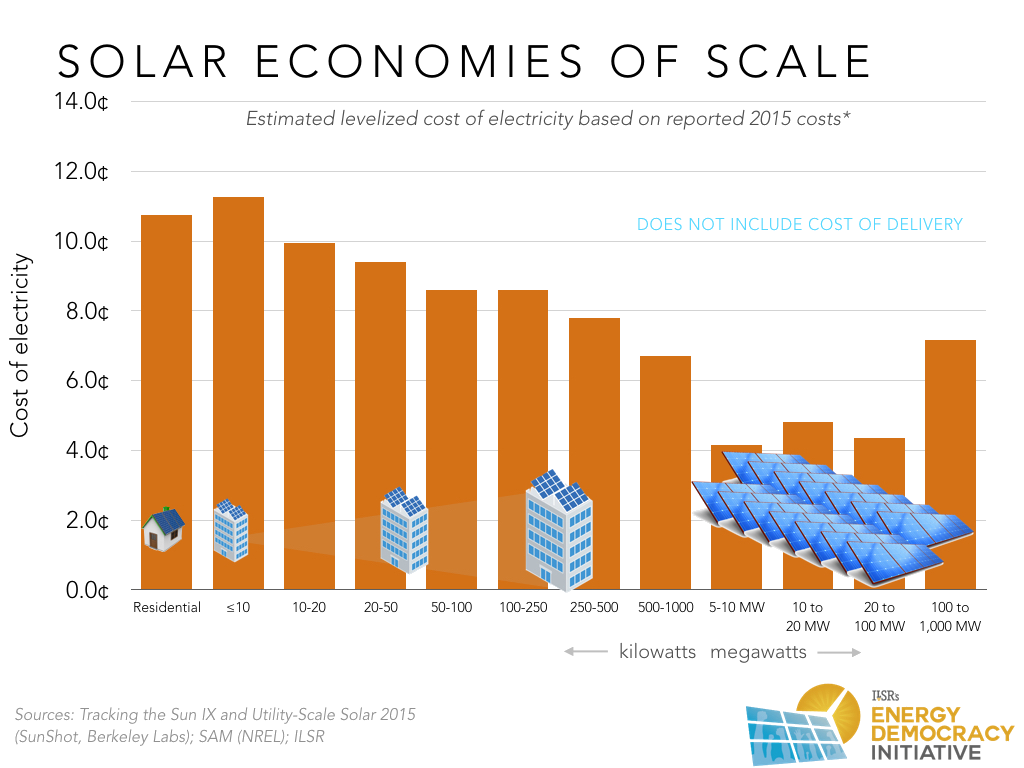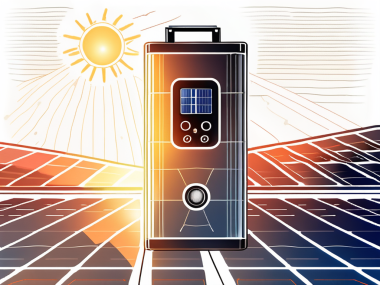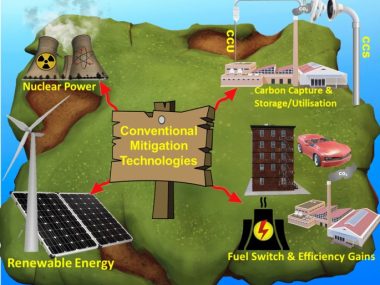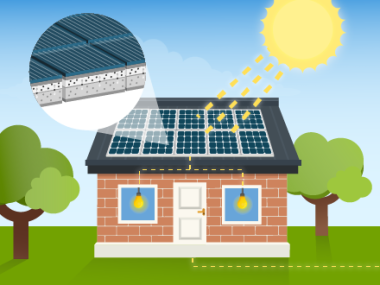- Solar energy systems are an essential answer to the global pursuit of sustainable energy alternatives, signifying a transition towards cleaner and renewable electricity production. However, their efficiency and cost-effectiveness are influenced by various factors, such as technological advancements, economic considerations, policy frameworks, and environmental conditions. Understanding these influential elements is vital for improving the effectiveness, accessibility, and economic viability of solar energy systems. This introduction investigates the key factors that affect the efficiency and affordability of solar energy, delving into advancements in technology, financial approaches, governmental policies, and environmental circumstances that collectively drive the advancement and adoption of solar power on a global scale.
1. Technological Advances
Technological advancements play a vital role in shaping the efficiency and affordability of solar energy systems, impacting various aspects of solar technology such as design, materials, and manufacturing methods. These advancements have significant effects on solar energy:
Increased Efficiency:
Enhancements in the efficiency of photovoltaic (PV) cells result in higher electricity generation per unit area of solar panels. This improved efficiency reduces the surface area needed to generate the same amount of electricity, leading to decreased installation costs and making solar energy more competitive against other power generation sources.
Cost Savings:
Breakthroughs in technology drive down the manufacturing expenses of solar panels, making solar energy a more economically feasible option. Innovations in materials, like the use of cost-effective semiconductor materials such as thin-film solar cells, contribute to cost reductions in production. Additionally, improvements in manufacturing processes, such as automated production lines and economies of scale, lower the cost per watt of solar panels.
Enhanced Durability and Longevity:
Progress in materials science and engineering results in solar panels with improved durability and longer lifespans. This increased resilience reduces maintenance costs and enhances the overall return on investment for solar energy systems.
Bifacial Solar Panels:
Bifacial solar panels, capable of capturing sunlight from both the front and rear sides, offer higher energy output compared to traditional single-sided panels. This technological advancement increases efficiency and boosts the energy yield of solar systems, especially in environments with reflective surfaces like snow or sand.
Smart Inverters and Power Electronics:
Smart inverters and power electronics allow for better management of solar energy systems, optimizing energy production and integration with the grid. These technologies improve system efficiency and grid stability, ultimately enhancing the overall performance of solar energy systems.
2. Economies of Scale:
Economies of scale refer to the phenomenon where the cost per unit decreases as the volume of production increases. In the context of solar energy, economies of scale greatly contribute to the reduction in the cost of generating solar power. As solar energy projects grow in size, several measures are implemented to save costs:
Bulk Procurement:
Large-scale solar projects often purchase materials such as solar panels, inverters, and mounting structures in large quantities. This enables negotiations with suppliers for lower prices, resulting in an overall decrease in the cost per unit.
Improved Installation Efficiency:
Larger solar installations benefit from economies of scale during the installation process. Installation teams become more skilled at deploying panels, connecting components, and completing projects, leading to reduced labor costs per unit of energy produced.
Streamlined Permitting and Planning:
Large-scale solar projects typically face fewer administrative obstacles per unit of energy generated compared to smaller installations. Simplified permitting and planning procedures help mitigate administrative expenses and project delays, contributing to an overall reduction in costs.
Enhanced Access to Financing:
Financing larger solar projects is generally more accessible compared to smaller installations. Financial institutions are more likely to offer favorable terms and lower interest rates for large-scale projects, thereby reducing the cost of capital and overall project expenses.
Operational Efficiencies:
Large solar farms benefit from economies of scale in operational and maintenance activities. Centralized monitoring and maintenance streamline tasks, resulting in lower costs per unit of energy produced. Overall, economies of scale play a crucial role in making solar energy more affordable and competitive compared to other methods of electricity generation. With the continuous expansion of solar installations, it is expected that the cost of solar power will further decline, leading to widespread adoption.

3. Solar Irradiance:
Solar irradiance is the measure of solar energy received per unit area at a particular location on Earth’s surface, indicating the strength of sunlight reaching that area. Typically measured in watts per square meter (W/m²), it is influenced by several factors:
Diurnal Variations:
Solar irradiance changes throughout the day, peaking at solar noon when the sun is directly overhead and decreasing during morning and evening hours as the sun’s position shifts.
Seasonal Changes:
Solar irradiance varies seasonally due to changes in the Earth’s axial tilt and orbital path around the sun. Generally, it is higher in summer and lower in winter in regions with distinct seasons.
Geographical Position:
Solar irradiance is typically higher near the equator and decreases towards the poles. Areas close to the equator receive more direct sunlight year-round, while regions farther away experience lower solar angles and shorter daylight hours.
Atmospheric Conditions:
Factors like clouds, haze, pollutants, and water vapor in the atmosphere can affect solar irradiance by scattering or absorbing sunlight before it reaches the Earth’s surface. Accurate data on solar irradiance is crucial for evaluating the feasibility of solar energy generation in a specific area. Higher levels of solar irradiance indicate greater sunlight availability, making an area more suitable for solar power generation.
This information helps in designing, sizing, and optimizing solar energy systems, enabling accurate predictions of their energy production. Instruments such as pyranometers or solar radiometers are used to measure solar irradiance levels. Understanding the patterns and fluctuations in solar irradiance allows stakeholders to make informed decisions about deploying and operating solar energy systems, contributing to the advancement of renewable energy integration.
4. Government Policies and Incentives:
Government policies and incentives are put in place by governmental bodies to promote the use of renewable energy sources, such as solar energy. These measures are aimed at achieving various goals, including reducing greenhouse gas emissions, enhancing energy security, and supporting economic growth in the renewable energy industry. There are different types of government policies and incentives that can influence the adoption and affordability of solar energy:
Financial Assistance:
Governments may offer financial support in the form of rebates, grants, or subsidies to individuals, businesses, or utilities that invest in solar energy systems. These incentives help offset the initial costs of installing solar panels, making solar energy more accessible and attractive to consumers.
Tax Credits:
Tax incentives allow individuals or businesses to deduct a portion of their solar energy system expenses from their tax liabilities. This significantly lowers the overall cost of solar installations, encouraging investment in solar energy and boosting economic activity in the renewable energy sector.
Net Metering:
Net metering policies enable owners of solar energy systems to receive credits or payments for excess electricity generated by their systems and fed back into the grid. This encourages the adoption of solar energy systems by providing financial incentives to homeowners and businesses for generating their own electricity.
Renewable Portfolio Standards (RPS):
RPS policies require a certain percentage of electricity sold in a jurisdiction to come from renewable sources, including solar energy. By mandating utilities to source a portion of their electricity from solar sources, RPS policies create demand for solar energy and drive investment in solar projects.
Feed-in Tariffs (FITs):
FIT programs guarantee payments or premiums for electricity generated from solar energy systems. These payments are typically higher than market rates, providing an additional incentive for investing in solar energy.

5. Financing Options:
Financing options encompass the various strategies available to individuals, businesses, and entities to cover the initial costs associated with installing solar energy systems. These avenues enable stakeholders to overcome financial obstacles and facilitate the adoption of solar energy by making it more accessible and cost-effective. Commonly used financing options for solar energy projects include:
Direct Purchase:
This involves funding a solar energy system directly using personal funds or capital. While this method avoids interest charges and allows for immediate ownership, it does require a significant upfront investment.
Solar Loans:
These are specialized loans offered by financial institutions specifically for financing solar energy installations. These loans may provide favorable terms such as low interest rates, extended repayment periods, and flexible payment options, allowing borrowers to use energy bill savings to offset loan payments.
Solar Leases:
In this arrangement, homeowners or businesses lease solar panels from a third-party provider for a fixed monthly fee. The provider retains ownership of the system and takes responsibility for maintenance and repairs. Lease agreements typically outline terms for a predetermined lease period, after which the system may be purchased, removed, or upgraded.
Power Purchase Agreements (PPAs):
PPAs are contractual agreements between a solar developer and a property owner or tenant. The developer installs, owns, and operates the solar energy system on the property, while the customer agrees to purchase the electricity generated by the system at a predetermined rate over a fixed term. PPAs often involve minimal to no upfront costs and can result in immediate savings on electricity bills.
Property-Assessed Clean Energy (PACE) Financing:
PACE financing enables property owners to finance solar energy and other energy efficiency improvements through property tax assessments. Repayments are made through property tax bills over an extended period, typically ranging from 5 to 25 years. PACE financing is linked to the property rather than the individual, making it transferable upon property sale.
Green bonds and financing programs:
Green bonds and financing programs involve issuing debt instruments to fund eco-friendly projects like solar energy installations.
Crowdfunding and community solar:
Crowdfunding and community solar initiatives allow collective investment in solar projects and sharing benefits from a centralized solar energy system. Stakeholders must evaluate their financial situation, goals, and preferences to choose the best financing option for a solar energy system. Through a variety of financing options, stakeholders can overcome financial challenges and accelerate the shift to clean, renewable energy.,
- In conclusion, Solar energy systems are intricately connected to various factors, including technology, economics, policy, and the environment. Technological advancements continuously improve solar panel efficiency, energy storage capacity, and system integration, leading to better performance and cost reductions. Economic factors, such as financing options, incentives, and economies of scale, play a significant role in making solar energy more accessible and financially viable for consumers and businesses. Government policies and regulations, including subsidies, tax breaks, and renewable energy goals, shape the landscape for the adoption and deployment of solar energy. These policies influence market dynamics and investment decisions. Environmental variables, such as solar radiation, climate patterns, and land availability, also impact the feasibility and effectiveness of solar energy systems in different regions. By understanding and addressing these factors comprehensively, stakeholders can optimize the efficiency and affordability of solar energy systems. This will accelerate the transition towards a more sustainable and renewable energy future. Collaboration among governments, industries, researchers, and communities is crucial in overcoming challenges and unlocking the full potential of solar energy as a clean, abundant, and cost-effective energy source for future generations.









